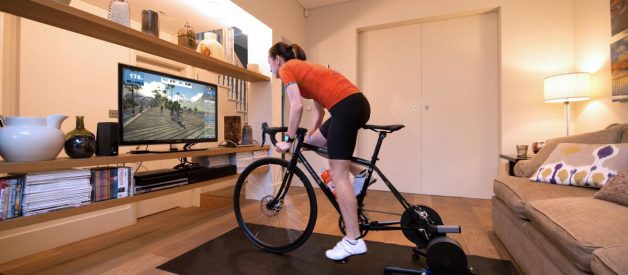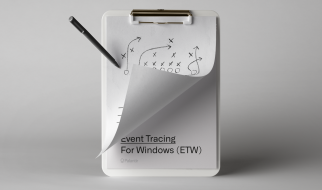As winter approaches and our schedules fill up, the weather and lack of daylight can make finding time to ride outside difficult. For many, the solution is spin classes or hitting the stationary bike at the gym. But it?s 2018 now, and there are some amazing ways to turn your trusty road steed into an impressive indoor ride without leaving your house. Today we?re talking indoor bike trainers. These days riding inside isn?t as dreaded as it used to be. Better and smarter indoor trainers are providing road-like rides filled with data and training apps (like Zwift) that provide an immersive and addictive game-like environment to maintain and improve your performance and endurance when rubber hits the road. There are a few different types of indoor bike trainers that we?ll cover; as well as their pros and cons.
Magnetic Bike Trainers
A magnetic bike trainer; also known as, a ?mag? trainer uses a magnetic flywheel to provide resistance. A flywheel is the wheel the back tire spins on. The magnetic flywheel has rotating magnets that create a set amount of resistance as they?re engaged or disengaged. To change the amount of resistance, you must either dismount the bike and select the new level, or change it via a handlebar-mounted cable that is attached to the trainer.
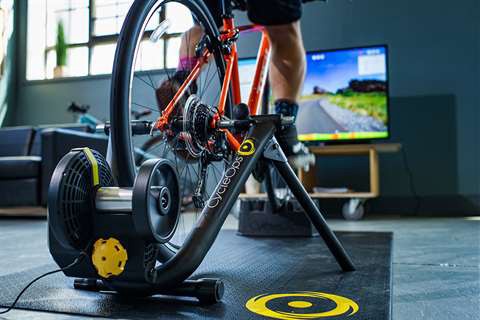 CycleOps Magneto Cycling Trainer
CycleOps Magneto Cycling Trainer
Pros:
- Simple to use
- Affordable
- Stable
- Compatibility options for virtual training or apps (on smart trainers)
- Easy to store
Cons:
- Louder
- Maximum resistance level
- Not compatible with some frames and wheel options
- Does not correct poor pedaling form
Fluid Bike Trainers
The most popular trainer today is the fluid trainer. A fluid trainer also has a flywheel, but the fluid trainer has an inner chamber of fluid to further tune the resistance options. As the fluid?s temperature increases inside the flywheel, it becomes thicker, meaning the faster you pedal the higher the resistance becomes.
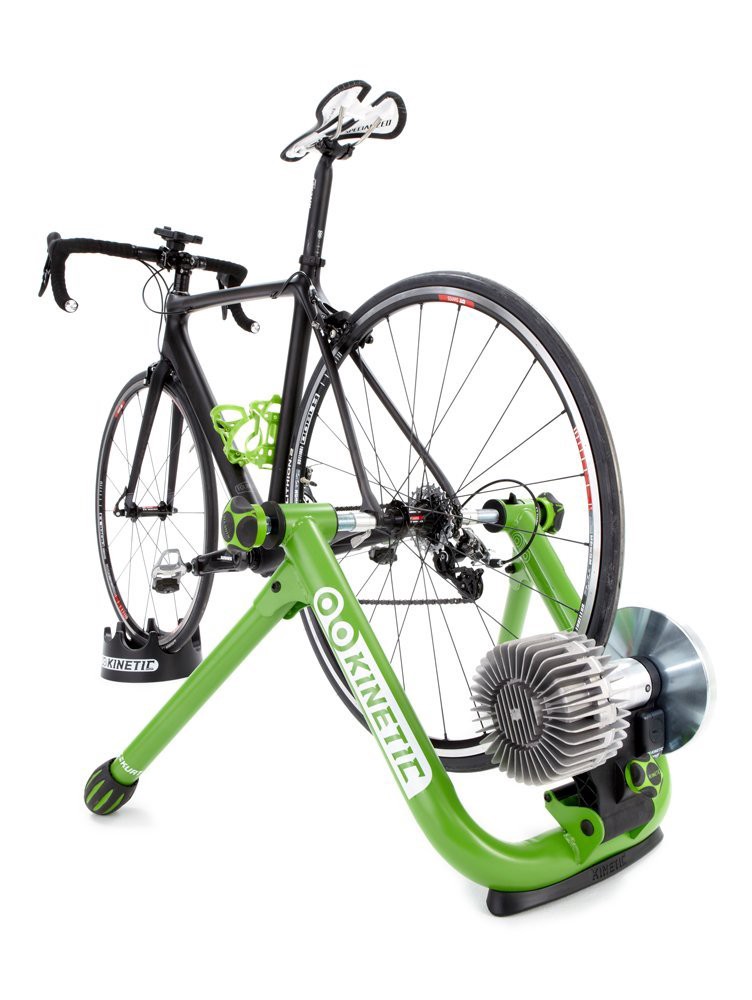 Kinetic Road Machine Smart Trainer
Kinetic Road Machine Smart Trainer
Pros:
- Simple to use
- Quiet
- Most road-like feel
- Impossible to overpower your trainer as your fitness increases
- Stable
- Compatibility options for virtual training or apps (on smart trainers)
- Easy to store
Cons:
- Potential for leakage
- Can be expensive
- Not compatible with some frames and wheel options
- Does not correct poor pedaling form
Rollers
The oldest style of indoor trainer is rollers. Just like it sounds, the roller trainer is a set of 3 rollers that the bike sits freely on top of. As you begin pedaling, the rollers spin underneath you, and just like a hamster in a wheel, you?re on your way to a great workout without moving an inch.
Where fluid and magnetic trainers attach the bike to the trainer via the rear-wheel skewer; rollers allow the bike to be freestanding, just like on the road. While some see this as a disadvantage, it is actually the most realistic to riding in the wild. Your body will have to engage more muscles and balance on the rollers than it does the flywheel trainers. As well, it?s nearly impossible to fall off a flywheel trainer, which can instill some bad pedaling habits after a while.
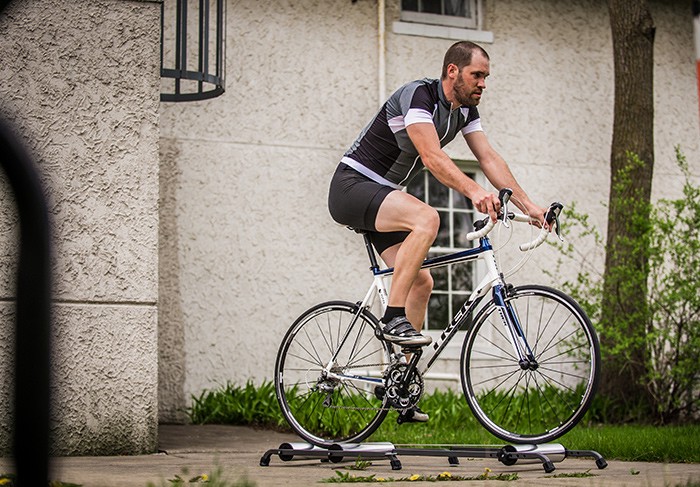 CycleOps Rollers
CycleOps Rollers
Pros:
- Best for maintaining or improving form
- Elite cyclist swear by them
- Effortless setup
Cons:
- Resistance range isn?t great
- Takes practice to not slide off
- Less stable for hard, out of saddle efforts
Direct Drive
The newest kid to block is the direct drive trainers. These actually replace the rear wheel altogether, and the trainer functions as the wheel.
 Tacx Neo Smart Direct Driver
Tacx Neo Smart Direct Driver
Pros:
- Crisper ride
- More efficient connection between bike and trainer because it doesn?t rely on tire friction to produce resistance.
- Saves tire life (trainers are hard on tires)
- Higher wattage
- Doesn?t require calibration as often as wheel-on trainers
Cons:
- $$$
- Tend to be heavier
Smart Trainer
A smart trainer is a flywheel trainer that can communicate with other devices such as phone-based apps that automatically adjust resistance or logs training sessions; as well as, online training platforms like Zwift. These days online training platforms are growing in popularity, as you can ride and compete with other riders around the world without leaving the house.
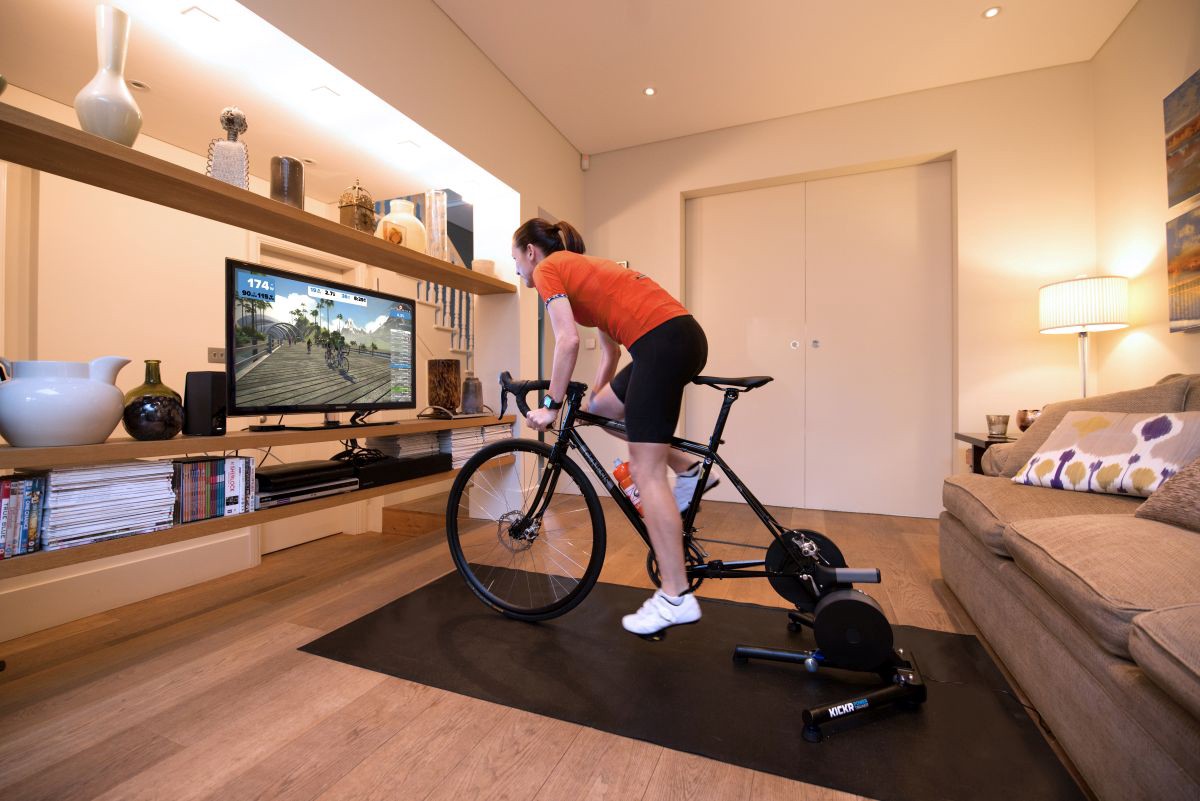 www.zwift.com
www.zwift.com
Things to Consider
Price: like ? always right? For many, all the bells and whistles aren?t really necessary and you can get a perfectly practical and functional trainer within your reasonable budget.
Storage: Some trainers have folding legs that can be a real space saver if need be, this feature typically adds modest amounts to the cost.
Compatibility: Trainers have axel attachment standards and widths. As well, many have skewer requirements. Make sure the trainer you?re looking at is compatible with your bike, and make sure it either comes with the skewer required, or that you purchase the right one.
Noise/Vibrations: All trainers make some noise and vibrations, some way more than others. If you are in an apartment or have people nearby that might not enjoy hearing you crank out on your trainer, it might be worth investing in a quieter one. Many people also put rubber mats under their trainer and bike to reduce vibration and collect the sweat.
Riser: If you go with a flywheel trainer, you?ll want to get a riser for your front tire. These are just cheap little rubber lifts your front tire sits on so you?re not on a downhill incline once you?re bike is locked into the trainer.
How Do You Like to Train?
What do you do when you have to train indoors? We?d love to hear your feedback and tips!
